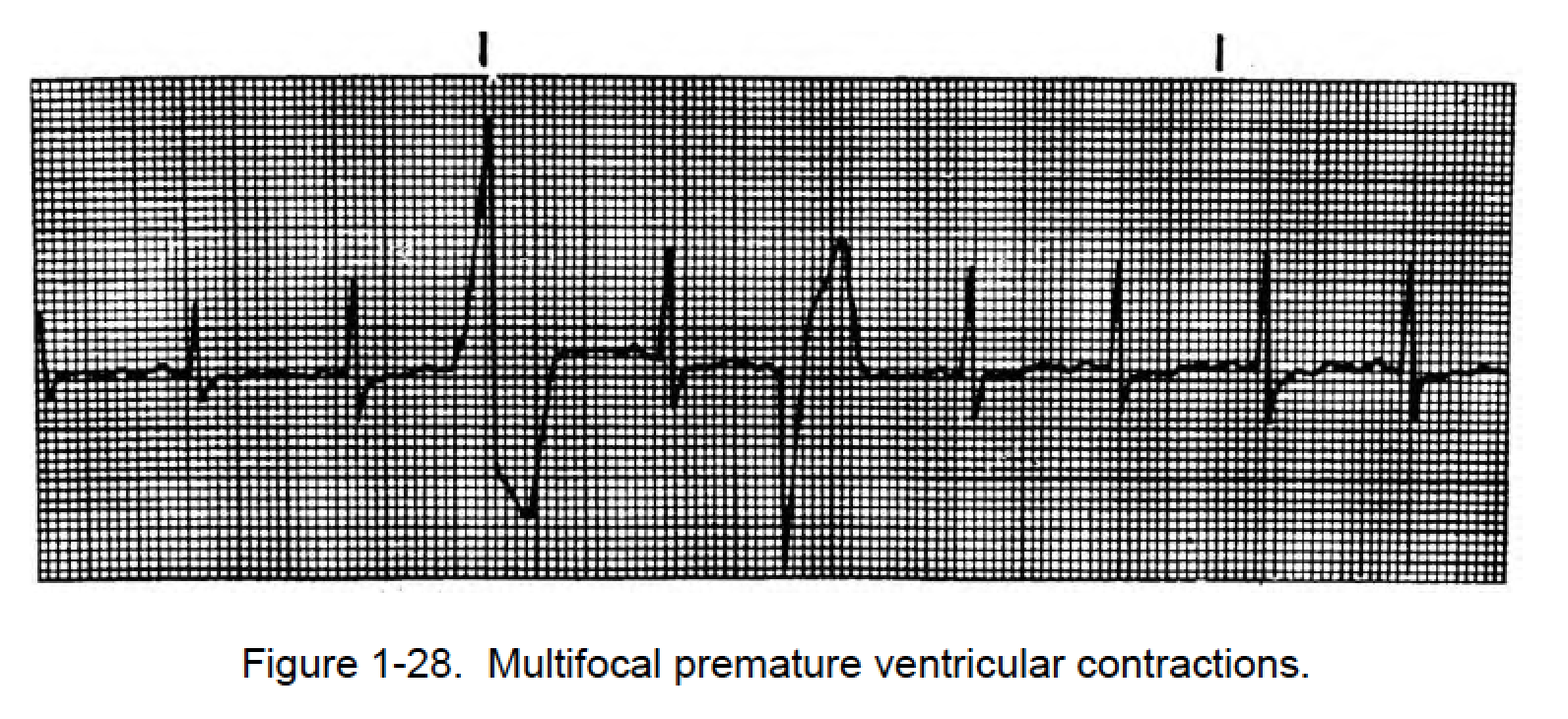1 - Rate:
the sinus impulse following the wide bizarre PVC occurs on time based on the sinus rate.
2 - Rhythm: IRREGULAR, may or may not have a compensatory pause.
The events following a PVC are of interest. Usually a PVC is followed by a complete compensatory pause because the sinus node timing is not interrupted; one sinus P wave isn't able to reach the ventricles because they are still refractory from the PVC; the following sinus impulse occurs on time based on the sinus rate. In contrast, PACs are usually followed by an incomplete pause because the PAC usually enters the sinus node and resets its timing; this enables the following sinus P wave to appear earlier than expected. These concepts are illustrated below.
Not all PVCs are followed by a pause. If a PVC occurs early enough (especially if the heart rate is slow), it may appear sandwiched in between two normal beats. This is called an interpolated PVC. The sinus impulse following the PVC may be conducted with a longer PR interval because of retrograde concealed conduction by the PVC into the AV junction slowing subsequent conduction of the sinus impulse. test
3 - Axis: skip this for now
4 - Width: WIDE
Wide QRS: The QRS is wide because the event does not utilize the His-Purkinje system to provide a rapid synchronized depolarization of the ventricular myocardium, and instead results from slower conduction through the ventricular muscle itself (e.g. from a site of origin in the right ventricle spreading through the muscle wall to the left ventricle).
5 - Height: TALL
Large QRS Amplitude: The QRS amplitude is large because the spread of depolarization is one-directional (e.g. from right to left) and there is less cancellation of the depolarization vectors that normally occurs when both the right and left ventricular walls depolarize at the same time, and in opposite directions, from endocardium to epicardium.
Inverted T wave: The T wave is inverted when ventricular repolarization follows in the same direction as ventricular depolarization, instead of occurring in the opposite direction from epicardium to endocardium (as it does normally).
II - Treatment:
Watchful watching
Figure out causes:
- H's and T's
- Oxygen
- Fluid
- Oral antiarrhythmias: amiodarone, verapamil, BB, HTN meds
- Check electrolytes
See more/Sources:
http://ecg.utah.edu/lesson/5-3#pvc
http://tmedweb.tulane.edu/pharmwiki/doku.php/ecg_interpretation_of_arrhythmias




No comments:
Post a Comment